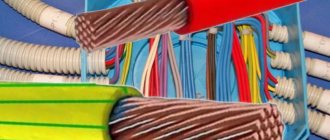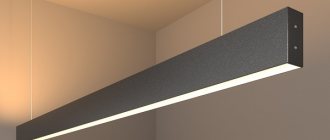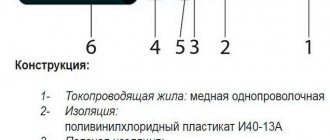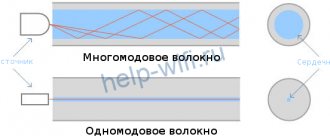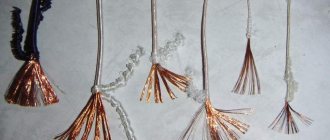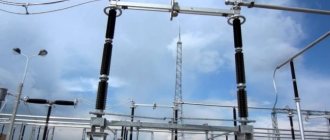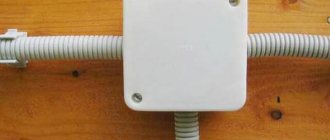There are situations when you need to use wires in rooms with high temperature and humidity in the air. This applies to baths, saunas, bathrooms and other similar premises.
For such places, special conductors are needed, since ordinary cables will not have the necessary resistance to moisture and other aggressive environmental influences.
For wiring in such a situation, PRKS brand wire is perfect. In our article we will talk about its parameters and features.
How to decipher the abbreviation PRKS
Thanks to the abbreviation, you can not only shorten the full name of the wire brand, but also, without special training, understand why this or that is needed and how it differs from others.
The marking of the PRKS wire we are considering can be understood as follows:
- “P” means that we are dealing with a wire, not a cable.
- The letter "P" indicates that the insulating layer is made of rubber.
- “K” indicates the type of rubber for insulation and braiding, in this case it is silicone, or silicone, rubber.
- “C” indicates that such wires are needed for connections.
Explanation of markings
What is the difference between a cable and a wire?
Cable models intended for installation work have names, the decoding of which can tell the consumer about the main properties of the product, the material from which it consists, and also suggest what these conductors are best used for.
If you take heat-resistant PRKS products, then the letters in their names carry the following information:
- The letter P indicates that the product belongs to the wire class. In this case, they include copper core components.
- The letter combination RK stands for “organosilicon rubber.” It is also called silicone. This is one of the common materials used as raw materials for conductor sheaths. Its features include the absence of halogen inclusions in the material. In addition, this rubber is impregnated with a special composition designed to protect against rotting and fungal attack, the threat of which appears under operating conditions conducive to this.
- The letter C indicates that this product is used to connect various circuit elements to each other. In the popular PRKA product, in some cases acceptable for use as a replacement for PKRS, the last letter of the marking does not indicate the aluminum composition, as you might think (in fact, this model also has copper veins), but the high degree of hardness of the product.
How it's made
PRKS are made of cores consisting of many copper wires. There are from one to five cores, which are connected in one shell. It has a circular cross section.
The insulating layers are made of silicon organic rubber. Many cables are insulated with this material because it helps withstand high temperatures.
GOST regulates what requirements a particular wire must meet, this also applies to PRKS.
Heat Resistant Wires and Cables
The main distinguishing feature of heat-resistant wires is the appearance of an additional layer of insulation. Typically this layer is made of a material with high heat resistance and is practically non-flammable. Often, the certificate of conformity states that this product is suitable for use in conditions of elevated temperatures, high humidity levels and can come into contact with aggressive environments of various origins. The target audience is bathhouses, kitchens of restaurants and cafes, industry, anywhere where the use of wiring with conventional insulation is unsafe.
Additional Information. The scope of application of heat-resistant wires and cables is specified in the PUE (Electrical Installation Rules).
There are several types of such products. Their main difference is the degree of resistance to aggressive external influences. The higher this degree, the more expensive the cable. However, in this case it is not worth saving on security, and the supervisory authorities will not allow you to save unjustifiably.
Key Features
Due to the design features, there are several main characteristics and parameters:
- The cores have the third class of flexibility.
- The smallest bending radii reach four outer diameters.
- This conductor must meet the requirements of technical regulations regarding fire resistance. These requirements are established by GOST. The fire resistance limit is equal to PRGO 1.
There are some key properties of this conductor, which include the following:
- With alternating current with a frequency of up to 400 Hertz, the nominal voltage values range from 380 Volts to 660 Volts.
- With direct current, the rated voltage reaches thousands of volts.
- Can operate at temperatures from minus sixty to plus one hundred and eighty degrees.
- Can work at almost one hundred percent air humidity.
- During prolonged operation, the conductors can be heated to one hundred and eighty degrees.
- In case of stationary use, it can last at least twenty years.
- When connected to mobile installations, it will last about twelve years, depending on the conditions of use.
- The lowest resistance value in insulation is one thousand volts at 0.5 megohms.
- The permissible current values for copper conductors with a rubber insulation layer are prescribed in the Electrical Installation Rules.
- The length in case of construction must be at least one hundred meters.
- Resistant to damage. They tolerate solar radiation and are protected from mold and fungi. They are almost not subjected to mechanical stress, that is, pushing. Can work in extreme environmental conditions.
Some manufacturers custom create PRKS wires with the most durable insulation, which can operate even at temperatures up to two hundred and fifty degrees.
Rubber insulation cannot last long in such conditions. In addition, some companies produce wires with polyester lines and tapes made of aluminum and polyethylene, in a variety of colors.
There are specifications regarding the thickness of the insulation layer suitable for different voltages. These requirements can be seen in this table:
As we have already mentioned, PRKS brand conductors contain from one to five cores. The range of their cross-section varies from one to sixteen square millimeters. Sometimes these conductors are connected to a three-phase network, in which case the wire can withstand 45,000 watts.
Typically, these conductors are manufactured according to state standards and to the values established by technical specifications. Manufacturers rely on the technical specifications of 2006 and 2007.
Due to the high functionality of the conductor, it is used to conduct energy in a wide variety of conditions. This conductor is considered in demand among consumers.
PRKS come in different weights and thicknesses. These are the main points of the design of the PRKS brand wire. The scope of its use is quite extensive, and we will consider it in more detail below.
Heat-resistant wire PRKS
Saranskkabel has begun serial production of installation
Updated IEC 60800 standard for electrical cables
GenNex 77 Series Cable Compound from Gendon
Attention
You are in a previous version of the Cables and Wires Guide.
The information provided may be out of date. Go to the current version for the latest information.
Heat-resistant wire PRKS is a copper wire with insulation and a sheath of silicon-organic rubber connecting), used for internal installation of electrical wiring of baths, saunas, connection of various heating installations, electric ovens, heating cabinets, dryers, electric grills and other devices exposed to elevated temperatures.
In comparison with cables, wires in PVC and rubber insulation, the operating temperature of which is up to +70°C, PRKS wire operates within permissible temperatures from -50 to +180°C, and relative humidity up to 98%. The PRKS wire has insulation and a sheath made of silicone rubber, which does not contain halogens, does not propagate combustion, has low smoke and gas emissions, and is environmentally friendly, which allows it to be used in the food, medical, cosmetic and many other industries, in rooms with high humidity and temperature , especially dangerous areas. The variety of cross-sections of the PRKS allows it to be used to connect devices with a power of up to 30 kW.
The wire is produced with a cross-section from 0.75 to 10 mm2, with a number of cores from two to five with insulation colors.
PRKS has a third class of conductor flexibility, with a bending radius equal to 4 times the cable diameter, and does not lose its ductility at low temperatures, ensuring ease of installation.
According to preliminary requests, it is possible to make RPKS of various classes of conductor flexibility, in an oil and petrol resistant design with temperatures up to +250°C. Under critical operating conditions, when the temperature and humidity of the environment can change many times in a short period of time, the insulation and sheath of the wire are not subject to aging and do not lose electromechanical properties. Subject to operating conditions, the service life of the wire is at least 25 years.
The wire has already found wide application in the installation of electrical equipment in cement factories, in the installation of dryers and electric stoves, and in saunas.
Table 1: Nominal wire diameter/weight
| Number of cores cross-section | 0,75 | 1 | 1,5 | 2,5 | 4 | 6 | 10 |
| 2 | 6,6/50,7 | 7,0/59,8 | 7,6/74,8 | 9,8/107,5 | 11,2/155,8 | 13,2/213,8 | 15,8/320 |
| 3 | 7,0/60,1 | 7,4/71,6 | 8,1/92,9 | 10,0/139,1 | 12,0/196,8 | 14,2/272,6 | 17,0/406 |
| 4 | 7,6/72,1 | 8,0/87,7 | 8,8/119 | 11,0/173,6 | 13,1/246,6 | 15,6/343,9 | 18,7/568,7 |
| 5 | 8/94 | 9/110 | 9,6/140,4 | 12,1/206,1 | 14,5/293,7 | 17,2/411,4 | 20,8/616,7 |
Table 2: selection of the wire cross-section of the PRKS wire
| section | 0.75 | 1 | 1.5 | 2.5 | 4 | 6 | 10 |
| Power, kW 220V | 3,3 | 3,7 | 5 | 6,6 | 9 | 11 | 17 |
| Power, kW 380V | — | 6,4 | 8,7 | 11 | 15 | 19 | 30 |
If you have not found information on the products you are interested in, contact the forum and you will certainly receive an answer to your question. Or use the form to contact the portal administration.
For reference: The “Directory” section on the RusCable.Ru website is intended for informational purposes only. The directory was compiled by sampling data from open sources, as well as information coming from cable manufacturers. The section is constantly updated with new data and improved for ease of use.
List of used literature:
Electrical cables, wires and cords. Directory. 5th edition, revised and expanded. Authors: N.I. Belorussov, A.E. Sahakyan, A.I. Yakovleva. Edited by N.I. Belorussov. (M.: Energoatomizdat, 1987, 1988)
“Optical cables. Manufacturing plants. General information. Structures, equipment, technical documentation, certificates" Authors: Larin Yuri Timofeevich, Ilyin Anatoly Aleksandrovich, Nesterko Victoria Aleksandrovna Year of publication 2007. Publishing house "Prestige" LLC.
Directory "Cables, wires and cords". Publishing house VNIIKP in seven volumes, 2002.
Cables, wires and materials for the cable industry: Technical reference book. Comp. and editing: Kuzenev V.Yu., Krekhova O.V. M.: Publishing House "Oil and Gas", 1999
Cable products. Directory Author: Aliev I.I., 2nd edition, 2004
Installation and repair of cable lines. Electrician's Handbook Edited by A.D. Smirnova, B.A. Sokolova, A.N. Trifonov 2nd edition, revised and expanded, Moscow, Energoatomizdat, 1990
Where is it used?
As you can understand from the parameters of this conductor, with the help of these wires you can implement a variety of plans for installing an electrical network in different rooms.
Using these conductors, you can conduct electricity to groups of lights and sockets. In addition, it is possible to supply electricity to power consumption devices installed in saturated air humidity.
Among the rooms where PRKS wires are installed, the following are distinguished:
- Baths and saunas.
- Kitchens, bathrooms.
- Industrial premises with high temperatures.
Among the installations subjected to constant heating using PRKS, the following can be distinguished:
- Electric ovens.
- Thermal cabinets.
- Dryers.
- Electric grill and other similar devices.
It is safe to say that there are no special regulations regarding the use of such conductors.
They can be used both for fixed connections and for moving electrical installations. The long service life justifies the reliability of this conductor.
Who produces
There are a large number of manufacturers producing PRKS. Among the best we highlight:
- Rybinsk cable. One of the oldest factories in Russia.
- Novomoskovsk cable. Equipped with the most modern equipment.
- Podolsk cable. Specializes in conductors that can withstand high temperatures.
Among those similar to the PRKS conductor, wires of the PRKA, PNBS and some others brands, with many cores and a fire-resistant insulating layer, are usually distinguished.
We talked about the key parameters of the PRKS conductor. Use this brand of wire for all rooms with high temperatures and humid air!
Subtleties of design
RKGM is manufactured in strict accordance with the current TU16.K80-09-90. The wire is single-core, made of copper, has flexibility from the fourth class according to the GOST 22483-77 classification.
The current documents document the correspondence of the core cross-section (nominal parameter) with the actual wire cross-section. For example, the thickness of a core per “square” is 0.31 mm. This means that the wire must contain three or more wires.
RKGM elements:
- INSULATION. Above the copper core there is a special insulating layer made using organosilicon rubber. Today the material has a simpler name - silicone rubber or SiR. The advantage of RKGM insulation is its high level of flexibility, resistance to high temperatures and stretching. To make heat-resistant wire, a composition is used that maintains parameters over a wide temperature range - up to 200 degrees Celsius or more. Today, silicone insulation is actively used for special fire protection wires that can withstand high temperatures up to 950 degrees Celsius. The insulation thickness varies according to the rated voltage.
- OUTER SHELL. On the surface of the product there is a braid made of special threads with a fiberglass structure and impregnated with a special type of varnish KO-921. This approach guarantees high fire resistance and increased strength. This type of varnish includes a glyphthalic composition and silicone resins. The use of impregnation guarantees the resistance of the wire to high temperatures (up to 250 degrees Celsius). In general, the cable insulation belongs to class H according to GOST 8865-93 and successfully withstands temperatures of 180 degrees Celsius.
This combination makes the heat-resistant wire RKGM an invariable assistant in situations where flexibility, unpretentiousness and the ability to work in a wide temperature range are required.
Description of the RKGM cable
